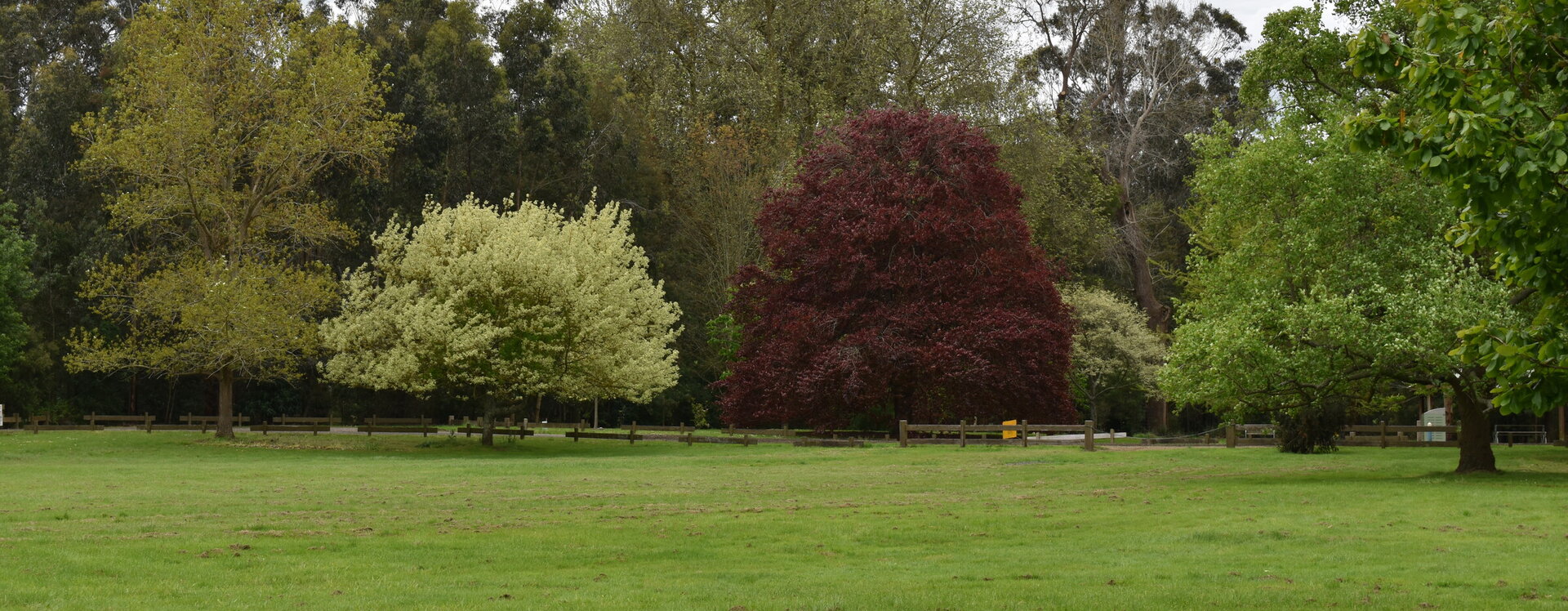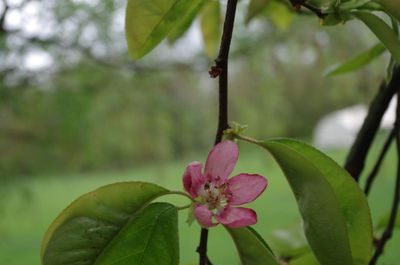
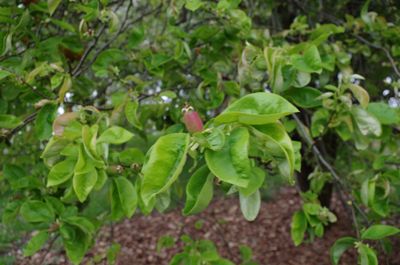
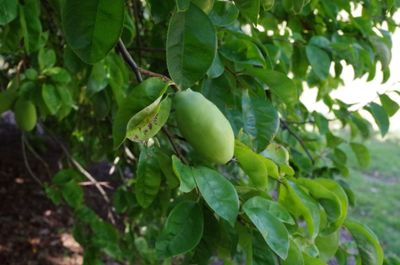
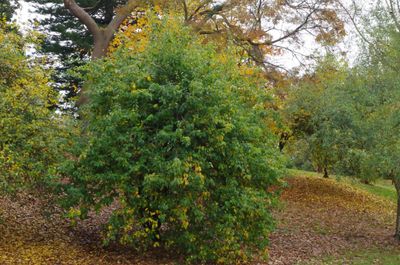
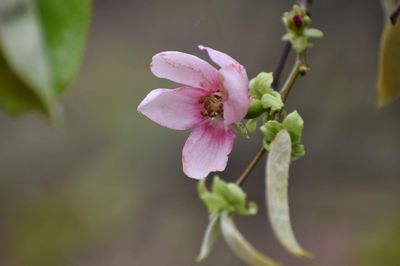

Pseudocydonia sinensis
Pseudocydonia
Pseudocydonia sinensis (syn Chaenomeles sinensis), common name Chinese flowering quince, is a deciduous or semi-evergreen tree in the family Rosaceae, native to southern and eastern China. It is the sole species in the genus Pseudocydonia. Its hard, astringent fruit is used in traditional Chinese medicine and as a food in East Asia. Trees are generally 10–18 m tall with a dense, twiggy crown. The leaves are alternately arranged, simple, 6–12 cm long and 3–6 cm broad, and with serrated margin. The flowers are 2.5–4 cm diameter, with five pale pink petals; flowering is in mid spring. The fruit is a large ovoid pome 12–17 cm long with five carpels; it gives off an intense, sweet smell when it ripens in late autumn. In China, both the tree and its fruit are called mùguā (木瓜). In Korea the tree is called mogwa-namu (모과나무) and the fruit mogwa (모과). In Japan, both tree and fruit are called karin (花梨; rarely 榠樝) except in medicine where the fruit is called wa-mokka (和木瓜) from the Chinese and Korean names. The fruit is hard and astringent, though it softens and becomes less astringent after a period of frost. It can be used to make jam, much like quince. In Korea, the fruit is used to make mogwa-cheong (preserved quince) and mogwa-cha (quince tea). The fruit is also used extensively in traditional Chinese medicine to treat rheumatoid arthritis (or "damp bi syndrome"). A 2007 pharmacological study suggests extracts of phytochemicals in the fruit have antioxidant and antiviral properties. The wood is frequently used in Japan for making low-end shamisen.
125.00 Location C5 Latitude; -38.402091260000 Longitude; 146.052513220000
